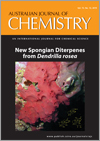
Australian Journal of Chemistry
Volume 72 Number 12 2019
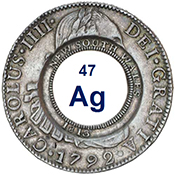
Silver, revered by the ancients who used it to fashion objects and coins, is a versatile element with many applications in everyday life and chemistry.
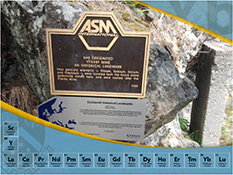
Ytterbium is the penultimate element of the lanthanoid series. This essay highlights the discovery, isolation, uses, oxidation states, coordination chemistry, and organometallic chemistry of this favourite element of ours.
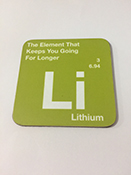
Here in celebration of the International Year of the Periodic Table (IYPT), we reflect on the history of lithium, the lightest element in our periodic table, highlighting its importance from bipolar to batteries.
CH18623The Guanidine-Promoted Direct Synthesis of Open-Chained Carbonates
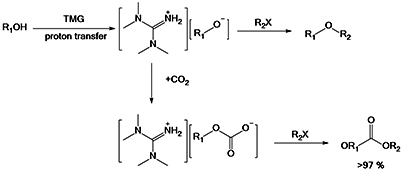
Direct synthesis of open-chained carbonates promoted by guanidine was achieved with alcohol and alkyl bromide. The reaction mechanism was investigated by NMR spectroscopy and controlled experiments. The substrate adaptability was also tested.
CH19312The Fabrication of 2D Cu-Based MOF Nanosheets for DNA Detection
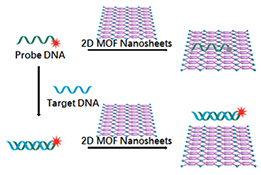
Cu-based 2D MOF nanosheets are fabricated as sensing nanoplatforms for DNA detection. The representative Cu(1,4-NDC) nanosheets provide good sensitivity and selectivity towards target DNA (T1 and T2) or a target DNA mixture in the presence with dye-labelled probe DNA (P1 and P2), which is evaluated by fluorescence intensity.
CH19363Synthesis of Tetracyclic Fused Quinolines via a Friedel–Crafts and Beckmann Ring Expansion Sequence
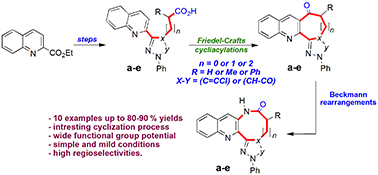
Polycyclic quinolines, in particular seven- and eight-membered ring systems, have been found in several natural products and pharmaceuticals. Herein we present our endeavours towards the development of a new, concise, and efficient protocol for the preparation of a wide range of quinoline polycycles based around the promising biological activities of tetracyclic lactam scaffolds incorporating seven-, eight-, and nine-medium-sized N-heterocycles.
CH19290Influence of Sodium Dodecyl Sulfate on the Microstructure and Electrochromic Performance of an Electrodeposited Nickel Oxide Film
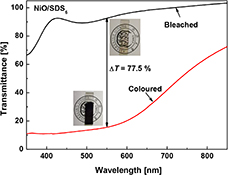
The addition of surfactant molecules is an efficient and cost-effective method to tailor the microstructure of electrochromic films and consequently enhance their performance. High optical contrast of over 77 % at 550 nm, short switching time (5.62 s for bleaching and 7.34 s for coloration), and enhanced cycling durability were achieved for a film deposited with 6 mM SDS.
CH19299Three New Spongian Diterpenes from the Marine Sponge Dendrilla rosea
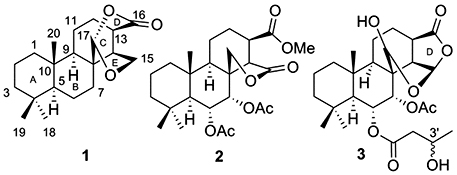
Spongian diterpenes are a diverse group of compounds that have been isolated from sponges of the orders Dictyoceratida and Dendroceratida. Dendrilla rosea was chemically reinvestigated and three new diterpenes, aplyroseols 20–22, were isolated from the sponge.
CH19355Carbon Dioxide Methanation Over Nickel Catalysts Supported on Activated Carbon at Low Temperature
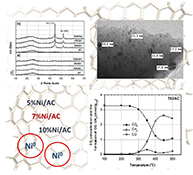
Catalysts containing nickel on activated carbon are tested for the methanation of CO2. Nickel loads of 5 to 7 wt-% increase both CO2 conversion and CH4 selectivity while >10 wt-% results in larger crystallite size and lower catalyst surface area. The high reducibility of the Ni species leads to the good performance.
CH19378Visible Light-Promoted C–C Bond Formation from Hydroxyaryls in Water
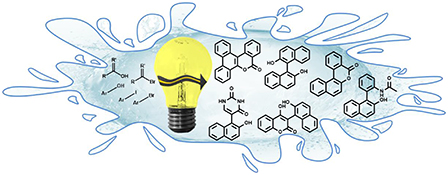
This paper reports an eco-friendly and direct arylation of hydroxyaryls in water using photoinduced reactions. For example, π-expanded coumarins, compounds with potential optical applications, were synthesized in very high yield, without the use of toxic reagents, in a one-pot reaction. In addition, we demonstrate that the irradiation source (halogen lamp) can be efficiently replaced by an LED without altering the reaction yield.
CH19341Supramolecular Interaction Between Cucurbit[8]uril and the Quinolone Antibiotic Ofloxacin
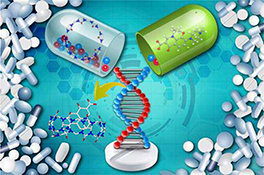
The host–guest inclusion complex of cucurbit[8]uril (Q[8]) and ofloxacin (OFLX) can be formed through an encapsulation of methylmorpholine and the piperazine ring in OFLX. Moreover, the controlled release of OFLX from the Q[8]–OFLX inclusion complex was also investigated at pH 6.8 and 1.2.



